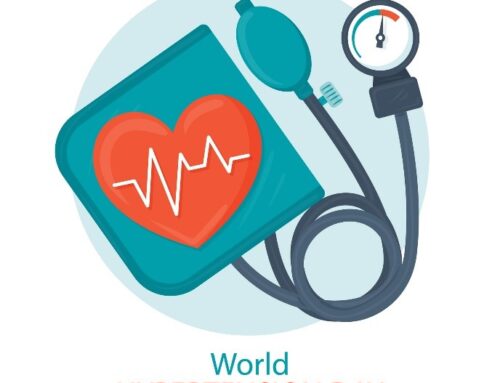Over the last number of years the opioid crisis has been addressed in multiple ways with one result being a dramatic decline in the prescribing of opioids. That decline has been, perhaps, too dramatic and the Centers for Disease Control (CDC) has now redrafted its 2016 recommendations which had been “misapplied” and in February of 2022 proposed new guidelines for prescribing opioids.
What has not been addressed in the opioid crisis is closing the “back door” where opioids are diverted and misused. Numerous studies have concluded that most patients given opioids have “leftovers” and rarely dispose of them properly with the result that many are “diverted” for improper use. Leftovers in the medicine cabinet remain the single most frequent cause of inadvertent prescription opioid addictions. If not disposed of properly, opioids often end up in the wrong hands or these medicines create environmental issues as still-potent substances enter the water supply or landfills by way of flushing or improper placement in the trash.
A Minnesota company, Verde Environmental Technologies, developed a patented technology to be used in the safe disposal of medicines, particularly opioids. The product is known as the Deterra Pouch and consists of an activated charcoal disposal system that neutralizes medicines. The Deterra technology is unique in that it breaks down to an unusable, environmentally safe molecular level that cannot be recovered. Even the bag, made from sugar cane, breaks down to organic material. It literally can be put in the trash.
An article in the Journal of the American Medical Association (JAMA Surgery 2019) has reported a remarkable and significant increases in the proper disposal of opioids when the Deterra Pouch is given to patients.
A study conducted by the University of Michigan Opioid Prescribing Engagement Network that was reported on in JAMA Surgery (2021) found seven out of 10 surgical patients had leftover opioids and that, when given a Deterra Pouch, 52% disposed of them properly as opposed to only 18% who were not given the Deterra Pouch.
Similarly, a study conducted by the Ohio State University Opiate Innovation Fund and reported on in JAMA Pediatrics (2019) indicated that eight out of 10 patients had leftover opioids and that 68% disposed of them properly when given a Deterra Pouch as opposed to 12% who were not given the Deterra Pouch.
While there is some cost involved, numerous medical practices have determined that the cost is warranted. Twin Cities Orthopedics is one of the nation’s largest orthopedic physician groups and recently began dispensing Deterra Pouches to patients at the time of receiving their prescription. The result: a doubling of proper disposal.
While there is considerable interest from physician groups, particularly those who prescribe opioids as a result of surgeries, there is equal, if not greater, interest from public officials confronted with the opioid crisis. Georgia just appropriated $500K for a pilot program to determine the need for requiring a drug disposal system with every opioid prescription. Albany County, New York and Rensselaer County, New York both require a drug disposal system to be issued with every opioid prescription.
There is currently legislation pending in both the New York (S7605/A9103) and Florida (SB 1136/HB 843) legislatures. These substantially similar bills provide that dispensers of opioids must provide for systems that allow for the deactivation of the medicines. It is likely that such legislation will be filed in numerous state legislatures.
The New York and Florida language is substantially similar. A copy of the New York language is shown below. The New York legislation is supported by the Governor’s Office and two counties in New York already require a drug disposal system.
S07605 Text:
STATE OF NEW YORK
______________________________________________________________________
7605
2021-2022 Regular Sessions
IN SENATE
December 15, 2021
___________
AN ACT to amend the public health law, in relation to requiring a
personal use pharmaceutical disposal system be provided at the time of
dispensing an opioid prescription
The People of the State of New York, represented in Senate and Assembly, do enact as follows:
1 Section 1. The public health law is amended by adding a new section
2 3309-b to read as follows:
3 § 3309-b. Opioid personal use pharmaceutical disposal systems. 1. No
4 person in the state shall dispense an opioid prescription to the ulti-
5 mate user of such prescribed opioid unless such person additionally
6 provides to such ultimate user a personal use pharmaceutical disposal
7 system at no cost to such ultimate user.
8 2. Each county health department shall provide personal use pharmaceu-
9 tical disposal systems to each pharmacy in such county at no cost to
10 such pharmacy to be distributed pursuant to the provisions of subdivi-
11 sion one of this section. Personal use pharmaceutical disposal systems
12 shall either be provided to each county health department by the
13 manufacturer of each opioid distributed in such county at no cost to
14 such county health department, or acquired by the county health depart-
15 ment through the use of funds made available from the opioid settlement
16 fund established pursuant to section ninety-nine-nn of the state finance
17 law.
18 3. A county health department may establish administrative procedures
19 to implement the provisions of this section.
20 4. As used in this section:
21 (a) “Personal use pharmaceutical disposal system” means a portable
22 product designed for personal use by the ultimate user for the purpose
23 of allowing the ultimate user of a prescribed opioid to deactivate the
24 prescribed opioid to a non-retrievable condition or state.
EXPLANATION–Matter in italics (underscored) is new; matter in brackets[ ] is old law to be omitted.
LBD13286-02-1
- 7605 2
1 (b) “Ultimate user” means a person who has lawfully obtained, and who
2 possesses, a prescribed opioid for his or her own use or for the use of
3 a member of his or her household.
4 § 2. This act shall take effect on the one hundred eightieth day after
5 it shall have become a law.




